Oslo is a major destination in its own right, but the capital’s surroundings hold equal appeal, with historic towns, coastal villages, and cultural attractions all within easy reach for a day trip.
Once you’ve explored the museums, parks, and waterfront of Norway’s capital, you might be tempted to head farther afield.
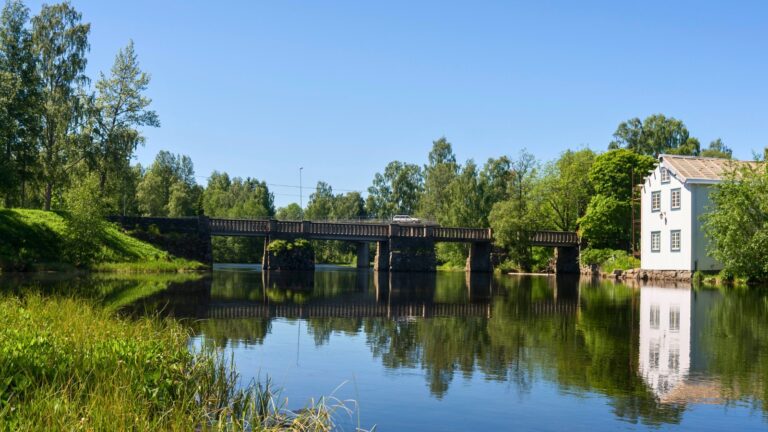
The good news is that Oslo is surrounded by charming small towns, cultural landmarks, and natural landscapes that make for easy and rewarding day trips.
The capital itself offers plenty to fill a weekend or more: the Viking Ship Museum and other highlights on Bygdøy, the iconic Holmenkollen ski jump, and the vast Nordmarka forest, which transforms from a hiking paradise in summer to a cross-country skiing playground in winter.
Yet part of Oslo’s appeal lies in how quickly you can exchange urban buzz for fjord views, forest trails, or even a taste of Viking history.
Whether you’re after art and architecture, family-friendly attractions, or simply a quiet corner of the Oslofjord, these destinations are all within striking distance of the city.
Table of Contents
Bærums Verk
Ten miles west of Oslo lies Bærums Verk, a former ironworks village dating back to 1610. Once central to King Christian IV’s industrial ambitions, it’s now reborn as a lively centre for shopping, crafts, and culture.
Along Verksgata, you can step inside a working blacksmith’s forge, watch a glassblower shape molten glass, and browse textiles and woodcraft in atmospheric timber buildings.
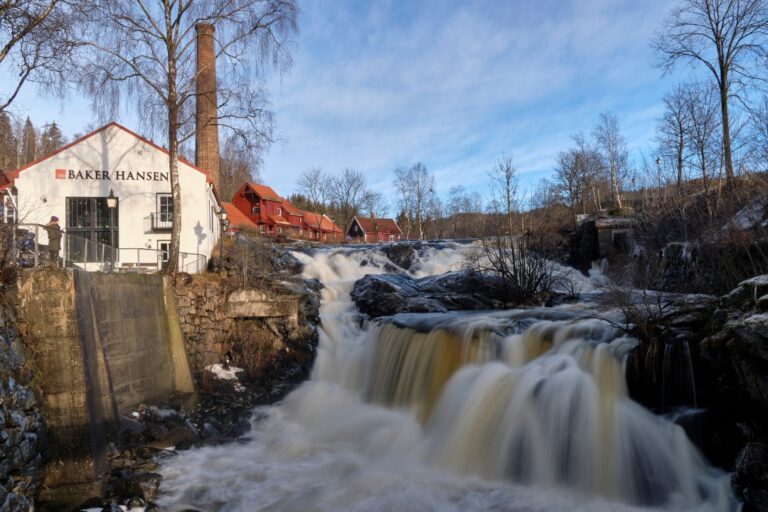
Cafés and galleries make it a pleasant stop year-round, but the village really comes alive at Christmas. Each Advent, stalls line the cobbled street, serving gingerbread, hot drinks, and handmade gifts.
Buses run frequently from central Oslo (route 150, two zones), making the 45-minute journey straightforward.
Tusenfryd
Tusenfryd, Norway’s largest amusement park, sits just 20 kilometres south of Oslo in Vinterbro. With around 34 attractions, including eight roller coasters and three water rides, it blends adrenaline, water fun, and family-friendly charm.
Thrill-seekers head straight for SpeedMonster, a launched coaster that accelerates to 90 km/h in just over two seconds, while ThunderCoaster, Norway’s only wooden coaster, delivers high-speed dips and airtime across its 950-metre course.
When the day heats up, families cool off at BadeFryd, the in-park water zone included in admission.
One popular attraction, Thor’s Hammer, is currently closed for the 2025 season for improvements and is expected to return in 2026.
The park operates from April to October, with opening hours varying across the season. Booking tickets in advance is recommended. Getting there is simple: take the Ruter 505 bus from Oslo Bus Terminal, which runs every 30 minutes and reaches the park in under half an hour.
Eidsvoll House
Set in peaceful countryside about half an hour north of Oslo, Eidsvoll Manor is one of Norway’s most important historic sites.
It was here in the spring of 1814 that 112 delegates gathered to draft and sign Norway’s constitution, a defining moment that marked the birth of modern Norway after centuries of union with Denmark.
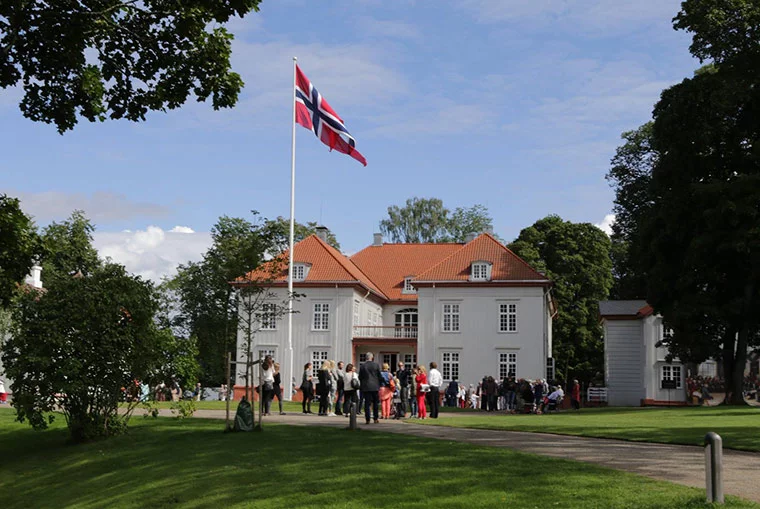
Today, visitors can tour the neoclassical manor itself, preserved to reflect the atmosphere of those six weeks of debate, and explore the adjacent visitor centre, which hosts exhibitions on democracy and civic life.
The grounds are open for leisurely walks, and guided tours in English are offered regularly, bringing the history to life for international visitors.
Reaching Eidsvoll is straightforward: trains depart from Oslo Central Station several times an hour, with a short onward walk or bus ride from the local station.
Drøbak
Just 40 minutes south of Oslo, the fjordside town of Drøbak makes for an easy and rewarding escape from the capital.
Narrow streets lined with white-painted wooden houses, cosy cafés, and galleries give it a distinctly small-town charm, while its harbour remains a lively hub for boating and fishing.
In summer, locals head to Badeparken, a green waterfront space with swimming areas, floating docks, and playgrounds. Families also enjoy the small Drøbak Aquarium, which showcases marine life from the Oslofjord.
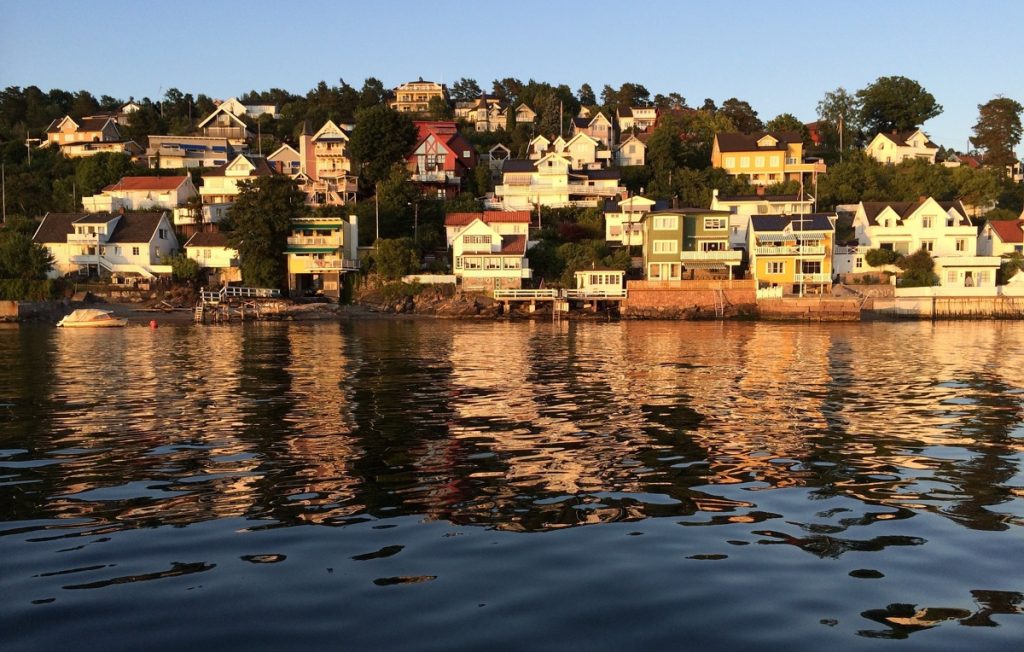
Year-round, the town is known for its whimsical Christmas connections: Tregaardens Julehus, the permanent Christmas house, doubles as the official home of Santa’s post office.
Just offshore lies Oscarsborg Fortress, a dramatic island stronghold best known for its role in World War II, when Norwegian forces stationed here sank the German cruiser Blücher during the invasion of 1940.
The fortress delayed the advance long enough for Norway’s king, government, and national treasures to escape northwards, making it a site of both military and symbolic importance.
Today, visitors can explore the preserved gun batteries, underground tunnels, and museums, or simply enjoy the peaceful island setting reached by a short ferry ride from Drøbak.
Fredrikstad
At first glance, modern Fredrikstad can seem like any other Norwegian city, with its shopping streets and riverside housing blocks. Yet hidden across the Glomma river lies something far more distinctive: one of Scandinavia’s best-preserved fortified towns.
Founded in 1567 by King Frederick II after Sarpsborg was destroyed in a fire, Gamlebyen—the Old Town—was built in a classic star-shaped design. Its ramparts and moats remain almost entirely intact, enclosing a community that has managed to keep its 17th-century character while welcoming today’s visitors.
Walking through the gates feels like stepping back in time, but with enough cafés, galleries, and boutiques to remind you this is a living town rather than a museum piece.
You can spend hours here without rushing: strolling along the grassy ramparts, browsing antiques in timber-framed buildings, or pausing in shaded courtyards with a coffee. The pace is slow, and that’s part of the charm.
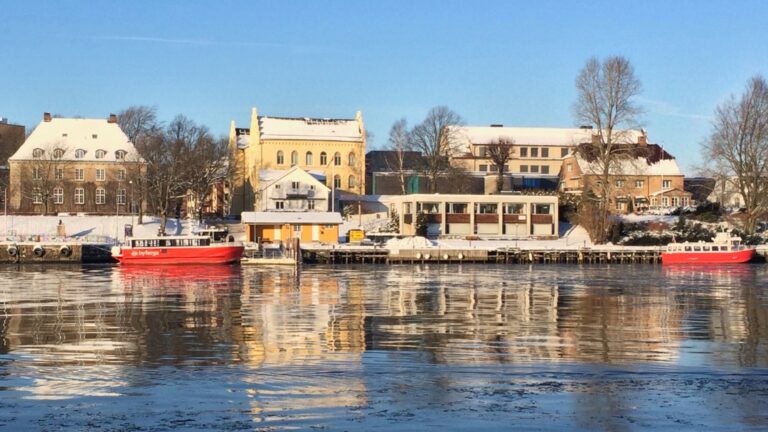
In summer, small festivals and markets spill into the streets, adding a touch of bustle to an otherwise tranquil atmosphere.
Reaching Fredrikstad and its Old Town is refreshingly simple. Trains from Oslo take just over an hour, and from Fredrikstad station it’s a pleasant walk to the river, followed by a short ferry ride across the water.
The ferry itself is part of the experience: free, frequent, and scenic. Few day trips combine history and ease of access quite so well.
Tønsberg
Tønsberg is proud of its title as Norway’s oldest city, with roots stretching back to the Viking Age.
Archaeological finds suggest settlement here as early as the 9th century, and the town’s long history is visible in the burial mounds, medieval ruins, and museums that dot the area.
Yet despite its age, Tønsberg feels young at heart, thanks to a lively waterfront and a summer season packed with festivals.
The Slottsfjellet hill dominates the skyline, crowned by the remains of a medieval fortress and a stone tower built in the 19th century. Climb to the top and you’ll be rewarded with sweeping views of the Oslofjord and the surrounding islands.
At the foot of the hill, Viking history comes alive through the Oseberg mound, where one of the most remarkable Viking ship burials was discovered in 1904. Today, replicas and exhibitions around the city tell the story of that extraordinary find.
Tønsberg is also the gateway to the Vestfold Viking Trail, a series of ancient sites strung along the coastline, making it an excellent base for anyone eager to explore Norway’s early past. But history is only half the story.
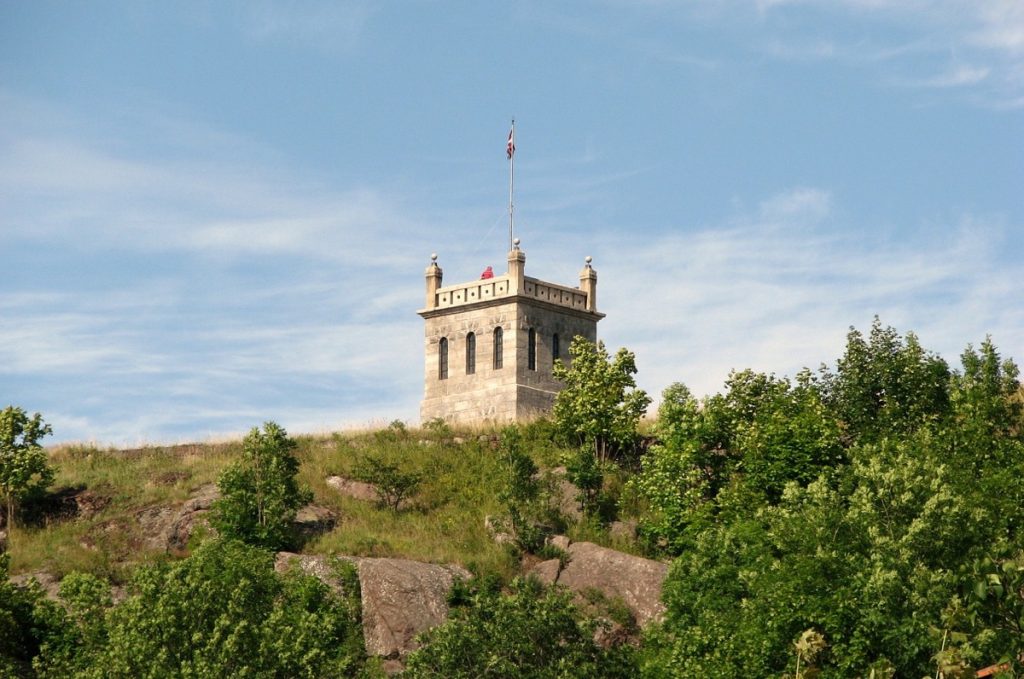
Along the modern harbour, restaurants and bars spill onto terraces, making it a popular spot for outdoor dining in the warmer months.
When the sun shines, the waterfront buzzes with life, and the city’s youthful student population ensures the atmosphere never feels sleepy.
Lillehammer
Two hours north of Oslo, Lillehammer is a small city with an outsized reputation thanks to the 1994 Winter Olympics.
Today, the Olympic ski jump and bobsleigh track are open for visitors, while the nearby Hafjell ski resort continues to attract winter sports enthusiasts.
Beyond sport, Lillehammer has cultural weight too. Maihaugen, an open-air museum with more than 200 historic buildings, tells the story of Norwegian rural life, while the city’s art museum has a fine collection of 20th-century works.
While a day trip is possible, an overnight stay is more relaxing, especially if you want to combine sightseeing with outdoor activities in the Gudbrandsdalen valley.
Kistefos & The Twist
North of Oslo, set amid forest by the Randselva river, lies Kistefos, a sculpture park and industrial museum that has become one of Norway’s most talked-about art destinations.
Its centrepiece, The Twist, is a striking gallery that doubles as a bridge across the river, twisting through 90 degrees along its span.
Inside, light-filled exhibition spaces host contemporary art, while the park features installations by international names such as Yayoi Kusama and Anish Kapoor. The surrounding forest paths and the preserved pulp mill make this more than just an art gallery—it’s an immersive cultural day out.

Kistefos is best reached by car (about 70 minutes), but coach tours also run in summer.
Hadeland Glassverk
Not far from Kistefos, Hadeland Glassverk has been producing glass since 1762. Today it’s part working factory, part visitor attraction.
Guests can watch skilled glassblowers at work, try their hand at blowing a small piece, and browse extensive glassware collections in the shop.
With cafés, exhibitions, and seasonal events (including a Christmas market), it’s a surprisingly full day out that combines craft, shopping, and history. Many Oslo families pair it with a visit to Kistefos.
Oslofjord Islands
For the simplest day trip of all, you don’t even need to leave Oslo’s city centre. From the piers at Aker Brygge, regular ferries shuttle passengers out across the Oslofjord to a cluster of small islands, each with its own character.
Within minutes, the bustle of the capital is replaced by quiet beaches, pine forests, and the sound of waves lapping against rocky shores.
Hovedøya is the closest and most popular, home to the ruins of a medieval monastery and wide grassy meadows perfect for picnics. Gressholmen, once the site of Oslo’s seaplane airport, is today a quiet retreat of wooded trails and sheltered coves.
Langøyene, a little further out, is one of the few islands with sandy beaches and designated camping areas, making it ideal for those who want to linger longer.
The islands are at their best on a warm summer’s day, when locals bring picnics, swimsuits, and even barbecue grills to make the most of the season. Yet they’re also worth visiting outside the summer months for a bracing walk, views of the city skyline, or a taste of island solitude.
With frequent ferries included in the standard public transport ticket, it’s a day trip that feels like an escape but requires almost no planning.
Whether you’re seeking history, culture, or simply a change of pace, these day trips prove that Oslo’s surroundings are every bit as rewarding as the capital itself.
If you enjoyed this post, why not share it on Facebook or Pinterest? There's a pin for that! Just hit those social sharing buttons.



We went to Lillehammer partly because we loved the black-humored TV series set there, and laughed ourselves silly trying to imagine a local Mafia. We loved the Maihaugen museum as well, but it was also on our way to Trysil, my grandmother’s birthplace.